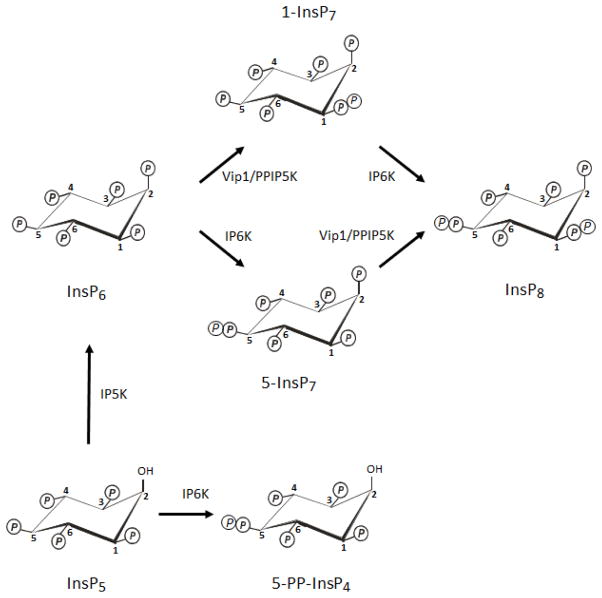Fig. 1. Synthesis of the PP-InsPs.
The figure describes the metabolic reactions that account for the synthesis of the PP-InsPs in both yeasts and mammalian cells. The positions of the diphosphate groups were determined in the following publications: (Albert et al., 1997; Draskovic et al., 2008; Wang et al., 2012). PPIP5K (E.C. 2.7.1.158), inositol pentakisphosphate kinase; IP6K (E.C.2.7.4.21), inositol hexakisphosphate kinase, PPIP5K (E.C.2.7.4.24), diphosphoinositol pentakisphophate kinase. This figure is adapted from (Shears et al., 2013). For the brave-hearted who wish to gain insight into the unassailable logic behind the universal numbering system for the six carbon atoms of Ins, start here: (Nomenclature Committee of the International Union of Biochemistry., 1989).

